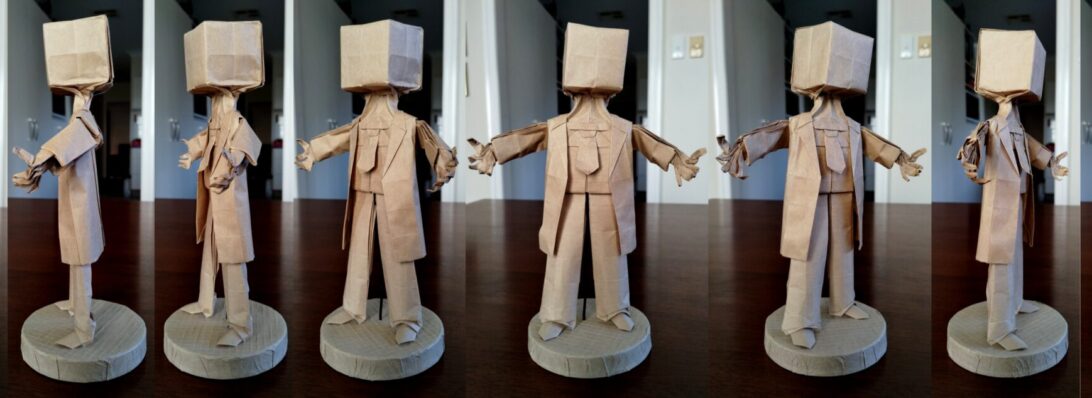Exploring the rich and intense world of tessellations, I decided it was time to try the second family of folds described in Ilan Garibi’s wonderful book “Origami Tessellations for Everyone”:

This is ‘Red Flower’, the base fold of which there re many variations, but the base molecule is based on a square grid and (for single molecule at least) simple to pre-crease and collapse.

When you scale up, accuracy shows itself as important – slight errors mean that the internal collapses twist the whole sheet out of shape.

Large fields of this tessellation is fairly easy to lay down, collapse really distorts the sheet and causes it to curl out of control. I found that the 4×4 field was cylindrical when i had finished collapsing the points, but flattened out slightly when the points were spread.

I lightly sprayed my 4×4 with a water mist, then placed it on a flat surface, lightly weighed it down to keep it flat as it dried. The wetting causes the paper to “reprograms” the paper to accept it’s new position, tensions relax and then seize in new positions (the basis of wet-folding).

My figurative origami bias initially wanted me to completely squash the spread corners, but the beauty of this particular variation of red flower is that it is 3-dimensional, puffed up, interesting.

There are a few variations of this tessellation that I may try, the family is fairly rich.

